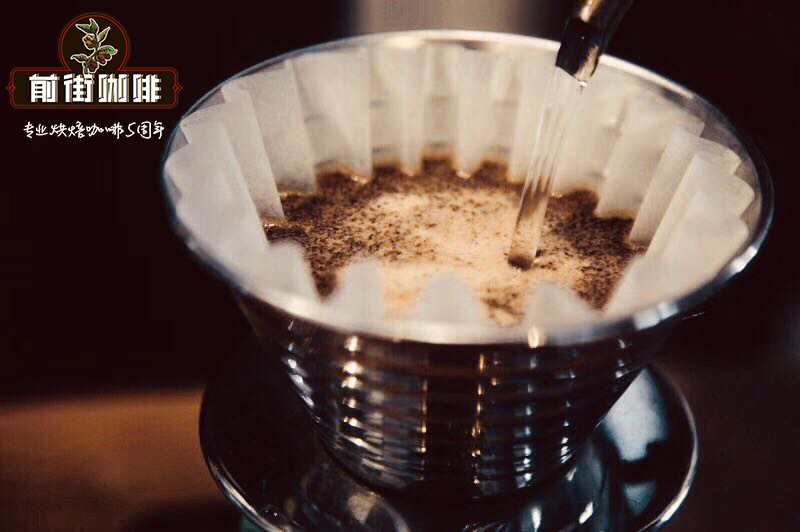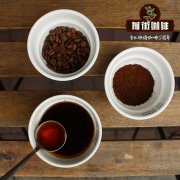Beans are divided by seed, RUIRU 11
Professional coffee knowledge exchange more coffee bean information please follow the coffee workshop (Wechat official account cafe_style)

Ruiru (RUIRU) 11
High-yielding dwarf hybrid varieties resistant to leaf rust and berry disease. Released in Kenya.
Ruiru 11 is a compact and high-yielding variety cultivated in Kenya that allows for higher density and reduces losses caused by diseases and insect pests. In 1968, coffee pulp disease broke out in Kenya, resulting in a 50% reduction in production. The crisis triggered action. In the 1970s, Ruilu Coffee Research Station began an intensive breeding program for CBD-immunized varieties and named it Ruilu 11. Ruilu 11 was released in 1985.
Breeders are committed to cultivating compact varieties that are suitable for intensive cultivation and with high flavor and quality characteristics that are mainly tall for African households. Breeders spend many years carrying out multiple crosses (which inherit the best properties of the selected parent). This work nurtured the father of Ruiru.
Ruiru 11 male parent is resistant to berry disease [from Rumei Sultan (RumeSudan), Timor (TimorHybrid Lines) and K7 and high quality flavor quality (L from N39, SL28, SL34 and Bourbon). The female parent selection of Ruiru 11 provides compact plant shape and additional protection against leaf rust and berry disease. Some Katim populations (including Katim 129) meet the requirements. Finally, the tall male parent was crossed with the female parent Katim to develop a compact Ruilu 11 population resistant to leaf rust and berry disease.
In order to propagate Rui Lu 11 on a large scale, breeders used pollen from male parents to artificially pollinate the female parent to produce the first generation (F1) hybrid seeds. This increases its heterosis, so the yield is high. Ruiru 11 brothers and sisters were mixed and distributed to farmers. This variety is called a compound variety. Because of artificial pollination, seed production can not keep up with the needs of farmers.
Important Notice :
前街咖啡 FrontStreet Coffee has moved to new addredd:
FrontStreet Coffee Address: 315,Donghua East Road,GuangZhou
Tel:020 38364473
- Prev

The only North Mangus Highway where Bolivian coffee is transported out of the rainforest.
Professional coffee knowledge exchange more coffee bean information please pay attention to the coffee workshop (Wechat official account cafe_style) South America is rich in coffee beans, Bolivia is no exception, parts of Bolivia's unique tropical rain forest environment, provides excellent natural conditions for the growth of organic coffee. The aroma of Bolivian coffee is rich and unique, whether it is the aroma of ground beans or
- Next

Effect of coffee on kidney health
Professional coffee knowledge exchange more information about coffee beans Please pay attention to the coffee workshop (Wechat official account cafe_style) one of the reasons why caffeine can help you lose weight is that it has a diuretic effect, and the other is the effect of burning fat. In the role of burning fat, the first is to stimulate the basic metabolism, so that the complete metabolism of calories, coffee, like exercise, has the ability to consume calories.
Related
- Why are the coffee in some coffee shops not enough after being frozen? What should I make up for my American latte cappuccino coffee after being frozen?
- How much water does it take to steam coffee by hand? Why is the coffee brewing and steaming time 30 seconds? What is the purpose of steaming coffee?
- The suspected drink contains too much caffeine! Overlord Tea Lady responds urgently!
- Starbucks rejects antique paper coupons?! Netizen: Missed marketing opportunities!
- What ratio of water temperature and ground does the smart cup method use to press coffee? The difference between brewed coffee and filtered coffee?
- What is the standard process for the purpose of coffee cup testing? What is the difference between hand-brewed coffee and cup testing?
- How to use hand-brewed coffee paragon small golden balls? How does cold coffee lock in the aroma of coffee?
- Is American coffee black? What is the difference between American coffee and drip coffee?
- Unexpected! Well-known tea beverage brand Lele Tea will withdraw from the Zhengzhou market!
- Starbucks enters the fashion and beauty industry?! Netizen: Give me an ice American eye cream

